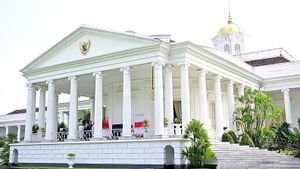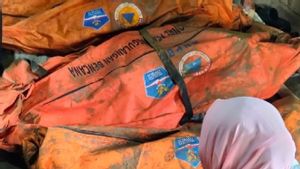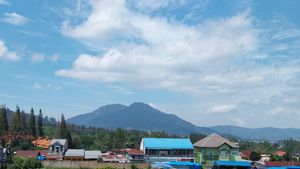JAKARTA - On November 28, 1979, Air New Zealand's commercial aircraft that frequently crossed Antarctica had an accident. The accident claimed 257 lives and was the worst plane crash in New Zealand history.
During the 1970s, air travel to Antarctica was very popular, as tourists wanted to see the isolated and mysterious continent at the bottom of the world firsthand. All day vacation trips from New Zealand provide people with incredible views of the Ross Ice Shelf. However, the journey poses a danger, as flights to Antarctica can be problematic.
The vast ice plains provide hardly a visual reference point for pilots and the magnetic compass is useless so close to the South Pole. At that time, the McDonnell Douglas DC-10, which was carrying 257 people to Antarctica on November 28, was piloted by five officers who had no experience flying to the ice continent.
Even worse, the data entered into the flight profile is wrong. When this same data had been used on previous flights, no problems were encountered due to good visibility. Poor visibility on November 28, led to fatal pilot error.
As the plane heads towards the Ross Ice Shelf, the pilot descends under the clouds to give passengers a better view. The pilot was supposed to be above 6,000 feet at all times, but descended to an altitude of 1,500 feet because of the cloudy sky. Due to incorrect data on the flight profile, the pilot had no idea he was going to descend just as the plane reached Mount Erebus, a 12,444-foot volcano. The plane crashed into the side of the mountain at 300 miles per hour.
To quote the BBC, Saturday 28 November, a search and rescue operation was launched and immediately confirmed the worst fears: the visible ruins on Ross Island, on the lower slopes of Mount Erebus and clearly no one had survived.
"The same accidents would not have happened to a modern airplane," said Captain Andrew Ridling, head of the New Zealand Air Line Pilots Association.
"The equipment today is very good. You have a satellite-based navigation system, so being in the wrong flight path like that is impossible," he added.
Debate rages on over who is guilty of the accident. While the chief air crash inspector attributed the disaster to pilot error, Judge Peter Mahon's Royal Commission of Inquiry has blamed the airline and its systems.
After confirmation was received that no one had survived the flight crash, expressions of sympathy began to arrive from all over New Zealand and the world. Queen Elizabeth II, Prime Minister Rob Muldoon, and Air New Zealand management and staff were among many people who publicly expressed their sympathy for the families and friends of the victims.
Even before confirmation was received, memorial services were being held in churches all over New Zealand. In the following days, formal memorial services were held in New Zealand's main centers. More warnings are being held in other communities affected by the disaster including in Antarctica. As recovery operations were nearing completion, those involved built a wooden cross that was erected near the crash site on Mount Erebus.
Since the first memorial of the disaster on November 28, 1980, a memorial has been erected. Most of these memorials are located in the Auckland area, the point of departure and destination of flights. Numerous memorials have been erected and memorial services have been held elsewhere in New Zealand.
The Erebus disaster is remembered in many ways. A warning service for victims was held immediately after the accident. The National Erebus Memorial will be inaugurated in Auckland this year, to be precise on the 41st anniversary of the accident tragedy.
The English, Chinese, Japanese, Arabic, and French versions are automatically generated by the AI. So there may still be inaccuracies in translating, please always see Indonesian as our main language. (system supported by DigitalSiber.id)










